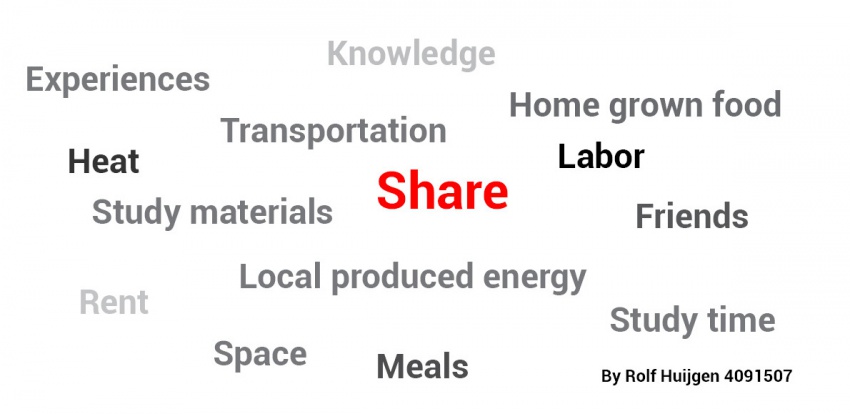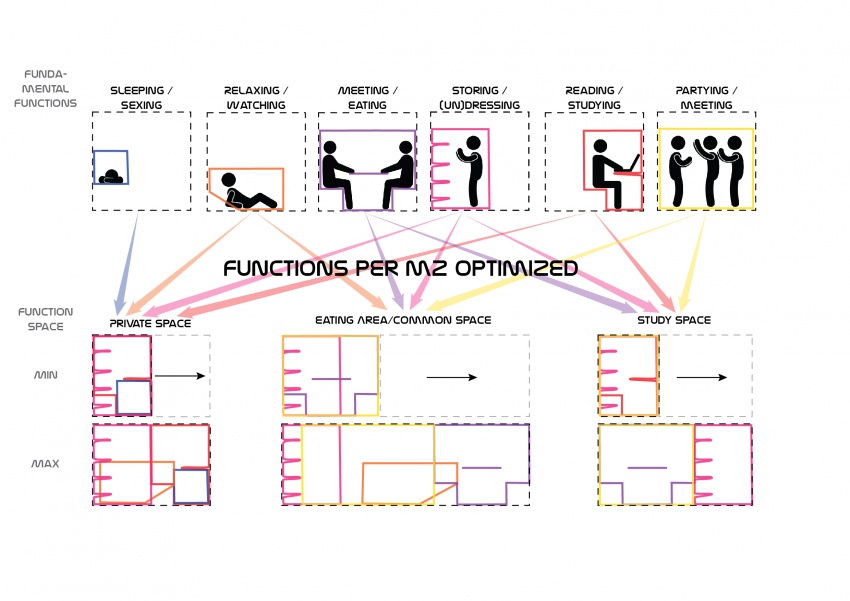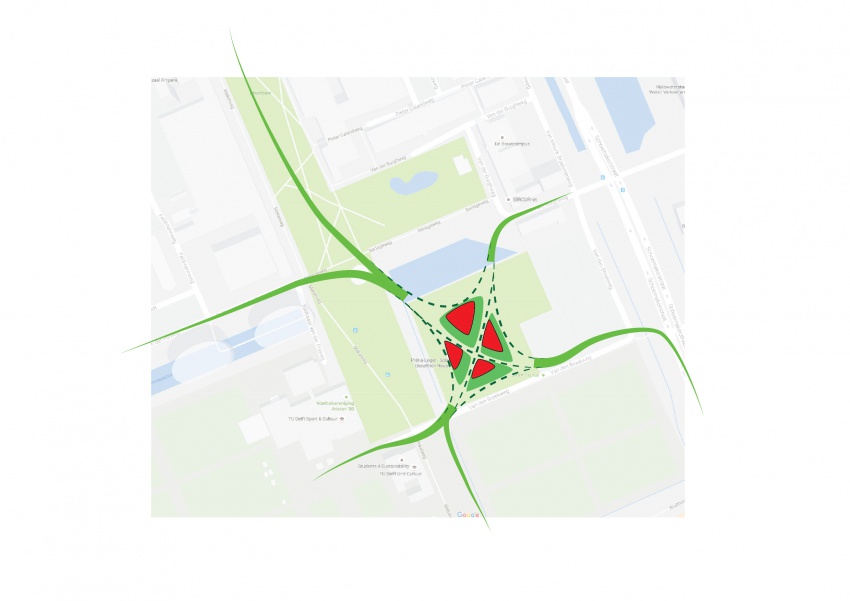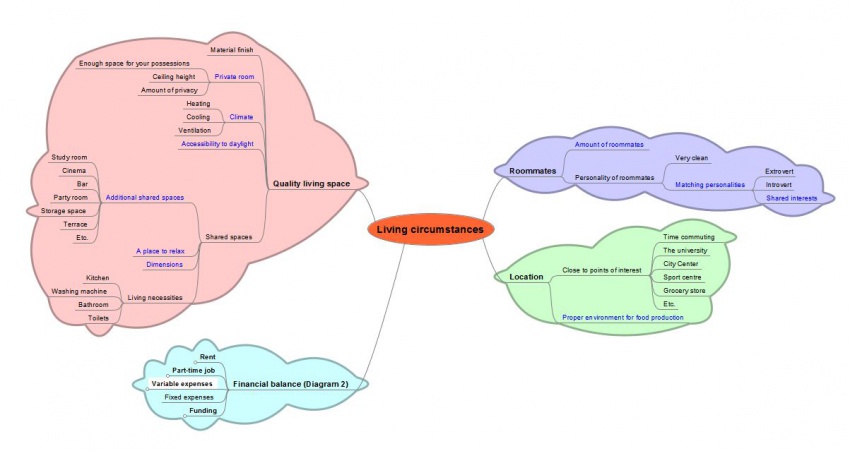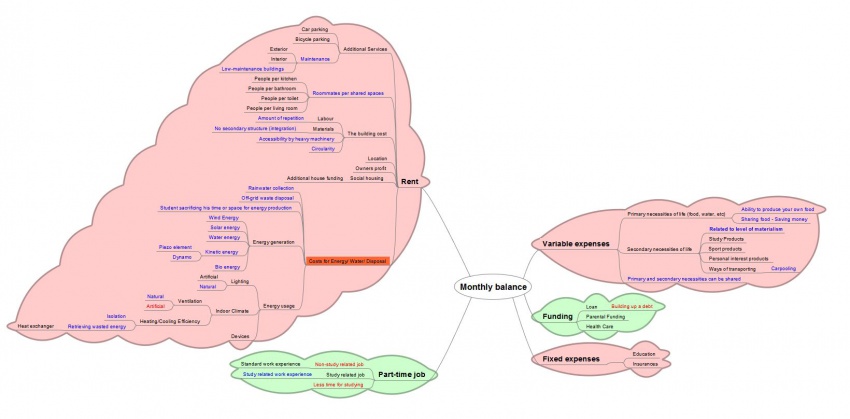|
|
| Line 21: |
Line 21: |
| | <div> | | <div> |
| | <p> | | <p> |
| − | <b>Sharing Resources:</b> <br>
| |
| − | The student debt and the rising costs of education are tremendously affecting the quality of student housing. With the help of the Dutch student funding it was still affordable for most students to live in proper housing without building up an incredible debt. This year however the student funding has been discontinued which leaves students with a major financial problem. The state’s solution to this problem is allowing students to get a loan with almost no interest. Although getting a loan is becoming quite regular for students, most don’t feel at ease having a big debt hanging over their head. The funding successfully allowed students to focus on their studies instead of worrying about their financial problems. Without the funding students only have a few options left to study without worrying about their financial problems. Students can either be lucky with parental funding, get a part-time job, decrease monthly expenses or find cheaper student housing. Only a small percentage of the students have access to parental funding and although a part-time job can provide a student with proper work experience, it usually only keeps them from focusing on their studies.
| |
| − | </p>
| |
| | | | |
| − | <p>
| |
| − | My concept addresses the last two options at the same time: cutting on expenses and cheaper student housing. ‘Sharing resources’ is the main theme of my project which can be directly related to both saving on expenses and rent. Not only can students share secondary and primary resources like food, study materials and bicycles, but with an S.M.A.R.T environment it will also be possible to share space more efficiently. Of course static spatial designs already allow people to have shared spaces like a living room, kitchen and bathroom, but what if you could share your own private space with your neighbors without sacrificing your own privacy. Would you give away your own space, if this would mean saving on rent? And how much space do you really need to fit all your possessions? These questions will inherently cause students to think about materialism. Is it worth keeping and buying more possessions, if it means paying more rent? To really cut down on the students rent, not only his own room needs to be flexible but also the shared spaces. The rent is determined by numerous factors (see diagram), but one the most cost effective way of making the rent affordable is having more students using the same shared spaces. Being able to share the spaces without any personal conflict requires smart spatial planning and of course the right mix of roommates.
| |
| − | </p>
| |
| | | | |
| − | <p>
| + | '''Reconfiguration techniques''' |
| − | | + | |
| − | <b>Theme</b> S.M.A.R.T environments<br>
| + | |
| − | | + | |
| − | <b>Goal</b> Lowering monthly expenses by efficiently sharing space, food and possessions with the help of S.M.A.R.T environments <br>
| + | |
| − | | + | |
| − | <b>Location:</b> TU Delft Campus <br>
| + | |
| − | | + | |
| − | <b>Problems I like to solve:</b><br>
| + | |
| − | *How to minimize the rent of student housing?
| + | |
| − | **How to make students more aware of their materialistic point of view
| + | |
| − | **How to promote sharing within student housing?
| + | |
| − | **How to optimize the amount of students per housing while minimizing internal conflict?
| + | |
| − | *How to separate study and relaxing functions?
| + | |
| − | *How to incorporate self-sufficiency within the building?
| + | |
| − | | + | |
| − | </p>
| + | |
| − | | + | |
| − | '''Computational Strategy''' | + | |
| | <div style="border: 1px solid #aaa; margin-right:10px;"> | | <div style="border: 1px solid #aaa; margin-right:10px;"> |
| − | [[image: Computational Strategy.jpg|850px]] | + | [[image: PKMN architects.gif|850px]] |
| | </div> | | </div> |
| | | | |
